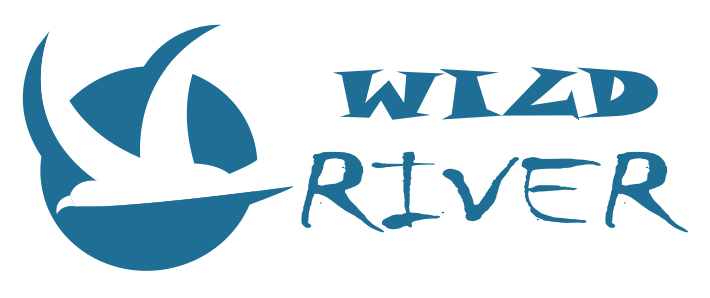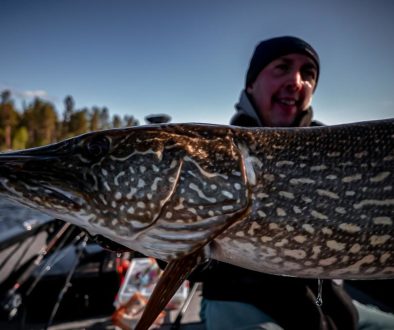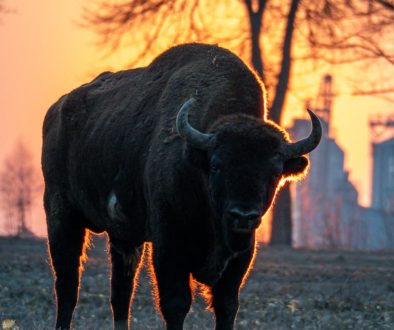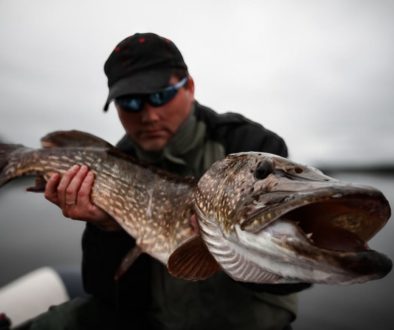Fishing trip to Scandinavia step by step: where to begin? (part 1 / 5)
For many years in Poland, there has been a concerning trend of declining fish populations in our waters. Skilled anglers familiar with the waters and fish habits can still fish effectively, but compared to many foreign fishing spots, the results often pale. Overfishing, pollution, and climate change significantly impact the quantity and quality of fish in rivers, lakes, and reservoirs, severely affecting fishing in Poland. As a result, many passionate anglers begin seeking alternative locations to pursue their passion. Increasingly, they choose foreign fishing spots, and Scandinavia, with its fish-rich waters and pristine nature, becomes one of the most desired destinations for fishing trips, especially since it’s relatively close to Poland.
Why Scandinavia?
Sweden and Finland combine natural wealth with extraordinary hospitality. Lakes, rivers, and the Baltic Sea are full of diverse fish species that tempt with their size and fighting spirit. A trip to Scandinavia is not just a fishing adventure but also an opportunity to immerse yourself in the culture and traditions of Poland’s northern neighbors. Anglers can expect abundant catches—especially pike, perch, and zander, which are beloved and prized trophies. Besides these, salmon, trout, grayling, and many others attract enthusiasts.
Scandinavia offers something unique—space, silence, and unspoiled nature, where one can truly feel free. Anyone who has tried fishing on the Baltic skerries, fish-rich and almost deserted rivers, or in deep lakes knows that it is an incomparable experience.
Organizing the Trip: Independently or with a Travel Agency?
Planning a fishing trip is a complex process where the primary role is deciding whether to organize the trip independently or use a travel agency. This decision influences later choices such as the destination, accommodation, and boating equipment. Therefore, it is worth considering which option will better suit your preferences and possibilities.
Organizing the trip independently provides great freedom and flexibility. You can tailor the travel plan to your needs and interests and often save money. However, independent planning requires more preparation and handling of formalities. You need to book transport, accommodations (or choose your favorite camping option, though this is also additional effort), and purchase necessary fishing permits. For those who enjoy full control over their trip and take pleasure in planning, this option may be ideal. Additionally, it offers almost unlimited choice of fishing spots, often with zero fishing pressure and a vast number of fish.
On the other hand, choosing a travel agency is an option for those who value comfort and professional organization. Travel agencies offer comprehensive packages that include transport, accommodation, meals, and all formalities related to fishing. Although it is a more expensive option, it provides peace of mind and certainty that all aspects of the trip are taken care of. Usually, before the trip, you receive information about the fishing spot, expected good fishing spots, etc. However, you then need to adjust to the available offer, at least in terms of available fishing spots.
Which option is better? There is no definitive answer, and everyone must decide for themselves.
Choosing the Trip Destination
One of the most crucial steps in planning a fishing trip is choosing the right place. Scandinavia offers a variety of waters that will meet the expectations of even the most demanding anglers. Choosing the place is critical because each water body has different conditions and offers various fish species. Everything depends on the angler’s individual preferences and the fish they aim to catch.
Scandinavian rivers are a proposal for those who prefer dynamic fishing and close contact with nature. The swift currents and crystal-clear water of mountain rivers are the kingdom of salmonids, while the middle and lower river courses are primarily home to pike and zander, which can be targeted both from the shore and, preferably, from a boat.
For sea fishing enthusiasts, the skerry archipelagos of the Baltic are a real treat. Picturesque islands create a unique landscape, and pike, gorging on a high-protein herring diet, grow to enormous sizes.
Lakes are the true kingdom of Sweden and Finland. Sweden alone has about 100,000 (one hundred thousand!) lakes, with the largest, such as Lake Vänern in Sweden or Saimaa in Finland, offering vast water spaces where you can catch massive pike and zander, as well as salmon, trout, and char. Smaller lakes are ideal for those who enjoy spending time in a peaceful environment, enjoying the silence and beauty of nature.
How to Choose the Right Location?
Choosing the right place for a fishing trip is a crucial step that often determines the success (or failure) of the entire trip. The decision mainly depends on your personal preferences, especially the type of fish you are targeting.
The basis is to establish the shoreline conditions for the trip, such as the maximum distance you are willing to travel, the region’s choice, and the fishing method (e.g., pike trolling or fly fishing for grayling). Each place has slightly different conditions, but the selection principles are often similar. Illustratively, we will focus on presenting the selection process when preparing for a typical trip to a lake targeting pike.
If you use a travel agency’s services, the matter is simpler—you can rely on their experience and choose the water from the available offer based on the provided information and advice. However, if you decide to organize the trip independently, you need to put in more effort. If you have a suitable boat (own or rented), it is usually safer to choose larger lakes because in small bodies of water, the fish population can be unpredictable—sometimes limited in number or small in size. For example, a few years ago, we caught hundreds of pike on a lake, none of which exceeded 80 cm. We later learned that this small, shallow, and less fertile water had a poor food base for predators, leading to stunted growth of the entire population.
Existing inflows and outflows increase the chances that the water is in good condition—flow ensures better oxygenation. It is best to choose lakes with at least two inflows. We usually aim for lakes with a varied shoreline and islands—this provides a natural base for fish habitats and makes it easier for us anglers to navigate such a reservoir. Large, deep ribbon lakes are usually harder to recognize, even though they can hide giant pelagic fish. A few years ago, getting to them often depended on luck and time spent on the water. Nowadays, with Live technology equipment, it is possible to target these giants with a focused approach on single specimens. However, a varied shoreline still offers more opportunities and shelter from the weather—winds in Scandinavia can blow up for days and make fishing on open water not only ineffective but impossible.
When choosing a fishing spot, it is also worth opting for waters where there is an alternative fish species to catch. Let them be zander, perch, trout, or other fish meeting our expectations. Sometimes, the main target of the trip is inactive, but then other fish often become active, turning a complete failure into a success.
Our process of selecting a fishing spot, which has proven successful for us over 13 years of organizing trips to Scandinavia, includes several steps:
- Initial selection using Google Maps, aiming to choose waters as far from cities and villages as possible. The fewer houses on the shores, the better. However, it is worth remembering that in Sweden or Finland, many people have summer houses by the lakes that remain empty most of the year and are visited only for a week or two during the holidays. This makes even seemingly isolated lakes a quiet and ideal fishing spot.
- Checking the lake’s bathymetry. Nowadays, bases like Navionics or Active Captain cover most lakes and rivers available to anglers. Therefore, it is best to check selected reservoirs in advance. Varied depth favors the pike population, while extensive deep basins increase the likelihood of very large pike.
- Checking fish population information, often available on websites where licenses can be purchased. In Sweden, useful sites include www.ifiske.se, www.altfiske.se, www.sportfiskeguide.se, and www.natureit.se. In Finland, it is worth using www.eraluvat.fi and www.metsa.fi.
- Internet analysis: checking information on internet forums, Facebook groups, searching for photos on Instagram from a specific location, and looking up other available information online. To increase effectiveness, besides searching in Polish and English, it is worth looking at the source—websites in Swedish and Finnish may contain valuable information, and tools like Google Translate and entire webpage translations solve the language barrier.
- If necessary: contact local guides or water caretakers in the municipality.
Documents and Fishing Permits
Fishing in Scandinavia requires appropriate licenses and permits. Regulations vary depending on the region and type of waters. In Sweden, fishing in most waters requires licenses that can be purchased online or at local fishing stores. It is essential to pay attention to specific regulations for individual regions, which may specify additional restrictions and rules—some waters are private and do not allow fishing at all.
Both in Sweden and Finland, prices start from a few euros for a one-day permit and go up to several dozen euros for long-term licenses. The starting point is to determine the water’s owner and check the rules for that particular reservoir. Before purchasing, it is also advisable to familiarize yourself with local regulations concerning closed seasons, catch limits, and seasonal bans. A few years ago, our friend realized just a few days before his trip, after purchasing a license, that the wild mountain lake in western Sweden he was headed to had a ban on fishing from private boats, and during his trip, there was no possibility to rent a boat locally. As a result, he had to change the fishing spot at the last minute. Therefore, it is worth checking everything in advance to avoid unpleasant surprises.
Summary
Planning a fishing trip to Scandinavia can be an extremely exciting and rewarding endeavor. Good organization and proper preparation will allow you to enjoy a fishing adventure in one of the most beautiful regions of Europe. Scandinavia offers unique conditions that will undoubtedly provide unforgettable experiences for every angler.
In the following four parts, we will share our experiences regarding the organization and logistics of the trip, accommodations, equipment (fishing, camping, clothing, etc.), and most importantly, our strategy and tactics for fishing on large and unknown waters.




